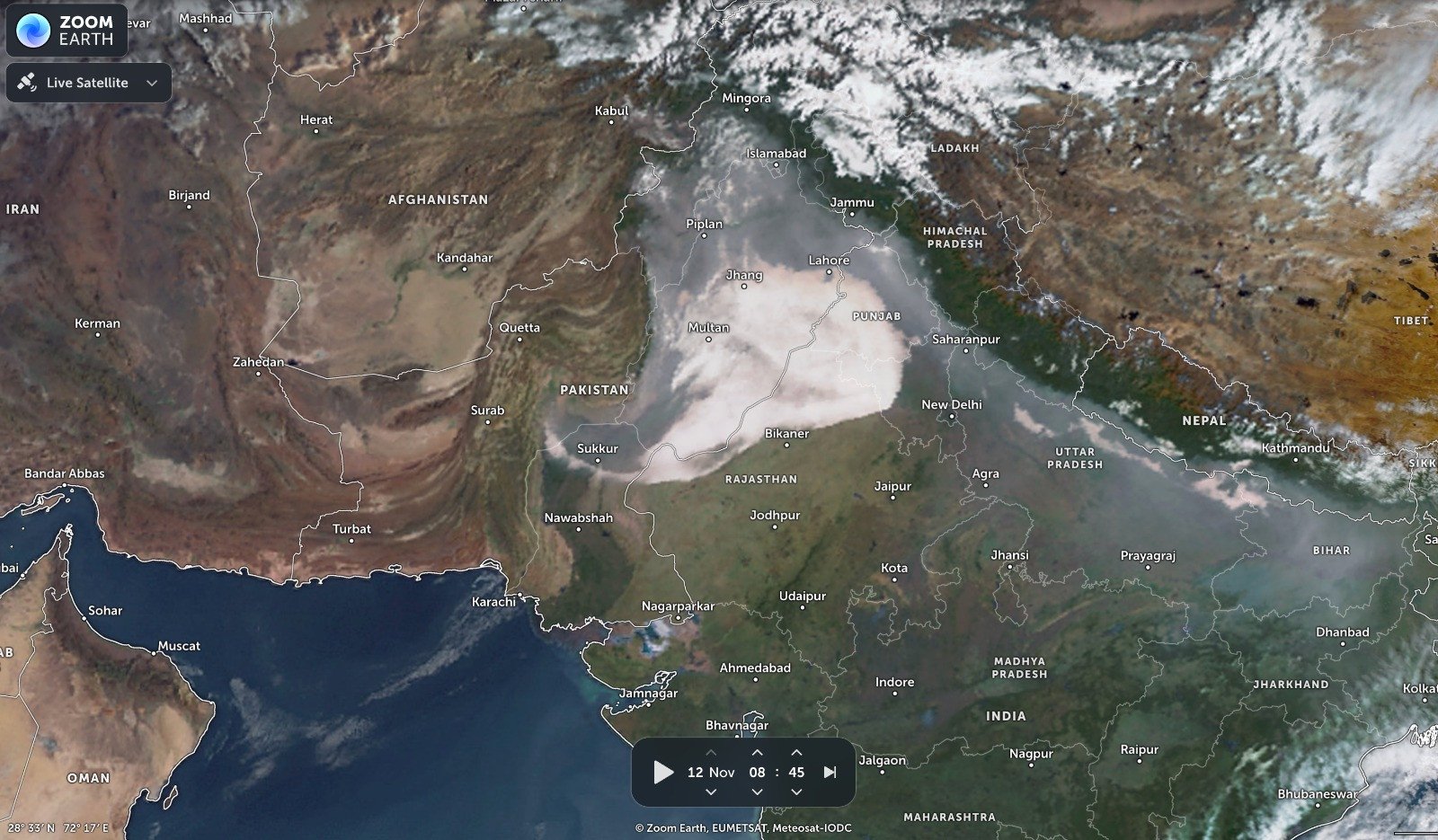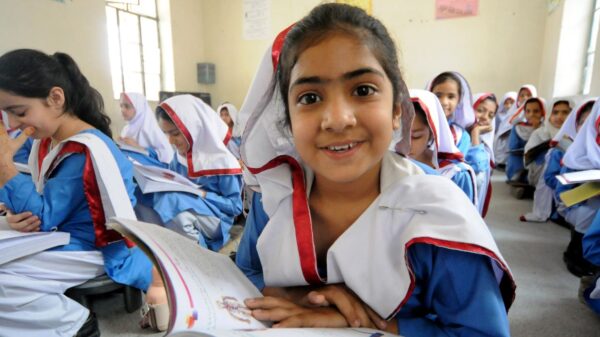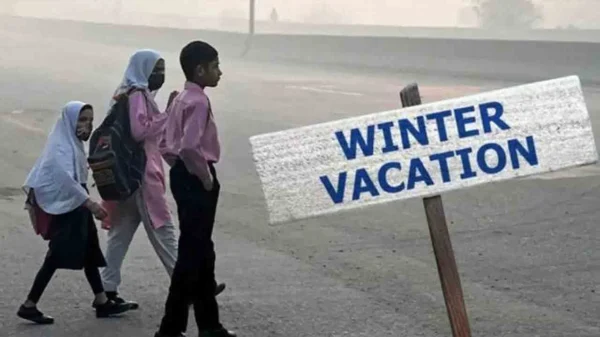Lahore, along with other regions of Punjab, has been battling a severe smog crisis for the past month, with satellite images now revealing the extent of the toxic haze engulfing the city.
The dense smog cloud, which has affected much of northern India as well, is so thick that it is visible from space in NASA’s satellite imagery. Lahore appears cloaked in a dark, hazardous haze, with almost no green spaces visible amidst the pollution.
The air quality in Lahore has reached alarming levels, with Swiss air quality monitoring company IQAir ranking it as the most polluted city in the world on Tuesday. The city topped the Air Quality Index (AQI), surpassing New Delhi and Kinhasa (Democratic Republic of Congo), which ranked second and third. Lahore’s AQI is classified as “very hazardous,” a category that poses serious health risks.
The smog crisis has already resulted in widespread health impacts, especially for vulnerable populations. UNICEF has issued a stark warning, highlighting the severe risks posed by the pollution, particularly to over 11 million children under the age of five. The toxic air has led to a surge in hospitalizations, including many children, and the environmental disaster has forced the closure of schools and public spaces across the city.
This annual smog crisis is exacerbated by a combination of factors, including the burning of agricultural waste, emissions from coal-fired power plants, traffic pollution, and stagnant weather conditions that trap the pollutants in the atmosphere.
While smog is a recurring issue in South Asian cities, local authorities in Lahore have described this season’s crisis as unprecedented in its intensity and impact. UNICEF’s representative in Pakistan, Abdullah Fadil, expressed deep concern over the dangers the pollution poses to young children, stressing that millions are at risk of serious health complications from daily exposure to the toxic air.










